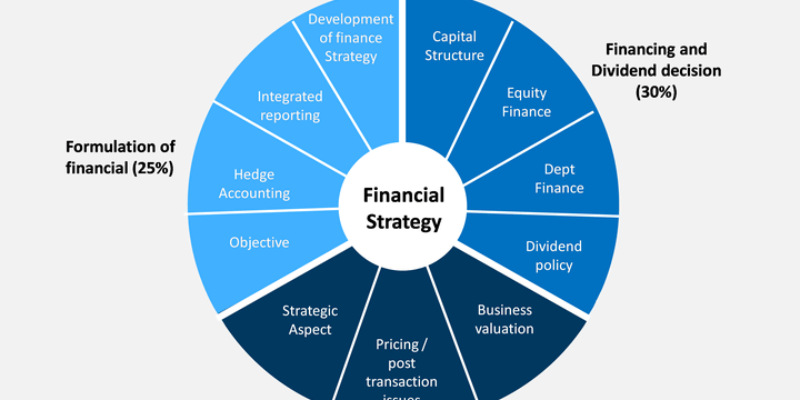World's Top 4 Most Essential Steps For Developing A Financial Plan In
Feb 15, 2024 By Susan Kelly
Your current and future quality of life is directly tied to your chosen investment strategy and the sound financial advice you receive. Creating a financial plan involves six basic steps, including managing one's finances. Substeps exist within each of these larger steps. Remember that your current financial state and your economic history will be considered at some point during the underwriting process, which will be walked through by a competent financial planner expert.
Here Are The 4 Financial Planning Steps?
Knowledge of the client's financial condition and goals is the first stage in the seven-step financial planning process, which concludes with regular progress monitoring toward the goals and any required adjustments.
- It's important to know the client's background and financial situation.
- Choosing and prioritizing objectives.
- Taking into account the client's present plan of action and any possible alternate plans.
- Suggesting financial planning (s).
Recognizing The Client's Individual Needs And Financial Situation
At the outset of the financial planning process, the CFP will ask a series of questions tailored to get insight into the client's background and goals. The client's health, family dynamics, values, earning capacity, risk tolerance, goals, requirements, priorities, and existing financial strategy are all explored through qualitative questioning. Questions on the client's revenues, expenses, cash flow, resources, assets, liabilities, liquidity, taxes, employment, government benefits, insurance, and estate planning are all examples of quantitative inquiries. If the adviser needs more information to get started on the plan, they may ask more open-ended questions to get it. Anything from longings to retire to the Caribbean to fears of the stock market could be included in this data.
Choosing And Identifying Goals

A financial advisor will use their knowledge to guide clients in setting realistic and attainable objectives. They will probe for further information to help zero in on the precise nature of your desired outcomes. What is your time horizon to provide just one example? Do you hope to reach this objective in five years, ten years, twenty years, or thirty years? How comfortable are you taking chances? Do you think a portfolio heavy on safe bets will get you where you want to go in the long run, or are you ready to take on a lot of relative market risk? The financial planner and client will establish priorities for the customer's goals.
Examining The Client's Present Plan Of Action
The next step is for the advisor to evaluate the client's present plan of action to determine if it leads to the desired outcomes financially. If it isn't, the advisor will come up with several alternatives and discuss the pros and cons of each with the client. Putting Together a Recommendation Regarding Financial Planning (s) The financial advisor will choose one or more suggestions to help the client achieve their objectives. Each suggestion is weighed against the following criteria:
- What presumptions underpinned the suggestion's creation?
- In what ways the suggestion helps the client achieve their aims
- How it fits in with the client's overall financial strategy
- In what ways is this suggestion crucially important?
- Consider whether or not the item can be executed alone or if it requires the implementation of other recommendations.
Recommendations For Financial Strategy Presentation

This is where the financial planner presents their findings and reasoning. The customer will be better able to judge whether or not the suggestions suit them.
Conclusion
A financially sound future is most likely to result from careful planning that adheres to a well-defined, documented approach. It won't ensure your prosperity, but it can open doors to it with the right research, self-control, and knowledge. Certified Financial Planners (CFPs) use a standardized process consisting of seven steps to developing advice for their customers' financial situations. The CFP profession generally agrees on these as best practices. Suppose the planner and the client agree the criteria are a component of the engagement scope. In that case, the planner must adhere to them to comply with both the Code of Ethics and Rules of Conduct established by the Certified Financial Planner Committee of Standards. Individuals who choose to serve as their own non - professional financial advisers may also learn and use these methods to their advantage.
-
 Mortgages Feb 08, 2024
Mortgages Feb 08, 2024All You Need To Know About Pros And Cons Of Debt Management And How It Affects Your Financial Situation
Using a debt management plan to decrease the effects of interest rates on your credit cards and as a means to reduce the payments you make in a month. There are companies working for this purpose specifically. They devise a debt management plan for you after understanding your financial situation to help you get rid of your unsecured debt. To quote a few examples, we can consider medical debts, debts due to interest rates of credit cards, or more general type, consumer debts are considered under this category.
-
 Investment Jan 06, 2024
Investment Jan 06, 2024What Is AA Power Of Attorney, What Role Does It Play, And How Do I Create One
The legal instrument known as a "power of attorney" (POA) designates one person as another's agent to carry out specified legal tasks. Consequently, an attorney-in-fact can act on their principal's behalf in court with a power of attorney. The principal and agent can agree on the agent's decision-making authority over the principal's property, money, investments, and medical care.
-
 Know-how Jan 31, 2024
Know-how Jan 31, 2024Deciphering Plaid: A Comprehensive Guide to Its Functionality
Plaid Cash app is a fintech platform that facilitates secure data connections between financial institutions and apps, streamlining transactions. Click to read more.
-
 Investment Jan 29, 2024
Investment Jan 29, 2024AARP Life Insurance 2024: An Essential Review for Informed Decisions
AARP Life Insurance, offered by New York Life, provides senior-focused policies with no medical exam, flexible coverage options, and exclusive benefits for AARP members. Read more.
